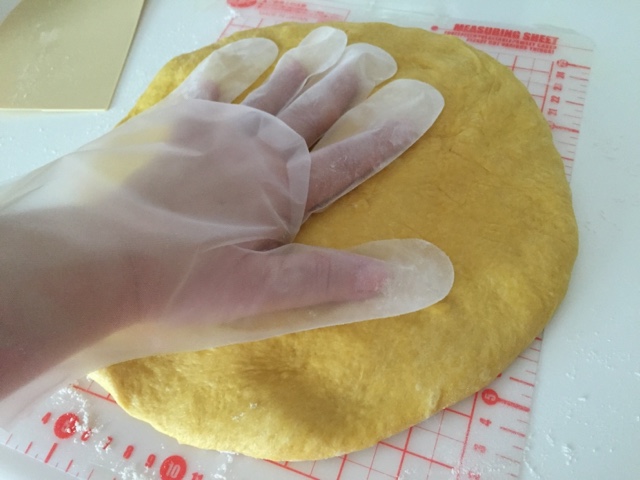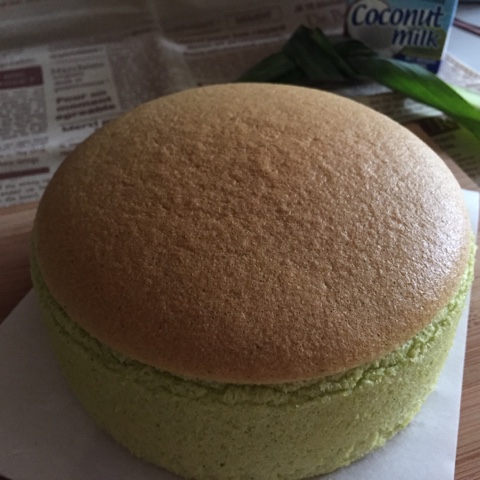Yield: one 20x10x14cm loaf bread
Appliances:
Whirlpool BM1000 breadmaker 面包机
Bread wright: 567g
Raw dough weight: 612g
Bread dough
Ingredients
115g cold multigrain soya milk 五谷豆浆
80g steamed pumpkin paste 熟南瓜泥
20g cold condensed milk 冷炼乳
35g raw sugar 黄砂糖
20g beaten egg 蛋液
1/4 tsp salt 盐
30g unsalted butter 无盐奶油
300g bread flour 高筋面粉
3/4 tsp instant dry yeast 即发酵母粉
20g cranberries 蔓越莓
20g walnuts, 核桃
Garnishing 表面装饰
Some beaten egg for glazing
<I use Japanese pumpkin in this recipe.>
Click the link below for preparation of the multigrain soya milk
Direction
1. Cut cranberries and walnuts into bit size. Set aside.
You may want to roast the walnuts in the oven toaster at 150 degree Celsius for 5 minutes. Keep a close look at the nuts to prevent over-roasting them.
2. Steamed pumpkin chunks at high heat for 15 minutes or till soften. Mash the pumpkin while it is hot into paste. Allow to cool to room temperature.
You may want to add a pandan leaf to the pumpkin while steaming to give it a sweet scent.
3. Pour cold multigrain soya milk, condensed milk and pumpkin paste into the bread pan.
4. Add in beaten egg.
5. Add in sugar, salt and cold butter.
6. Pour in bread flour.
7. Dig a hole and pour in the instant dry yeast.
8. Place the bread pan into the bread machine.
9. Select "8" Dough Kneading function; and press "Start".
10. When the program is over, let the dough stays in the breadmaker for another 15 to 20 minutes.
As cold ingredients were used, the proofing process has been slow down. So an extra proofing time was given.
11. Invert out the dough onto a floured work top. Flatten the dough to release the trapped air. Divide the dough into 2 equal portions, about 303g each.
12. Roll up the dough, fold to let the two ends meet, shape the dough into 2 balls by pulling down the sides, and seal at the bottom.
Cover and let them rest for about 15 min.
13. Flatten the dough and roll out into a flat oval dough.
14. Roll up the dough from the shorter side, cover with a lid, and let it rest for 10 minutes.
15. After the rest, roll out the dough into a flat dough again. The shorter length of the dough should correspond to the shorter width of the Pullman tin.
16. Flip the dough over so the smoother side will be facing out after rolling up.
Sprinkle 1/2 of the cranberries and walnuts over the surface and roll up the dough from the shorter end.
Place the dough into a greased non-stick Pullman tin. The open end of the dough should be facing down.
17. Spray some water over the dough and place the doughs in a closed oven.
Let the dough proof in a warm oven for about 60 to 70 minutes, or till the dough reaches almost the rim of the Pullman tin.
To facilitates the second proofing, you may switch on the oven to its minimal temperature for about 1 minute.
18. After the second proofing and the dough has reached the rim of the Pullman tin, remove the dough from the oven. Preheat the oven to 170 degree Celsius. And brush a coat of beaten egg over the dough.
19. Bake the dough at the lower rack of the oven at 170 degree Celsius for about 45 to 55 minutes. If your Pullman tin has a thinner wall, you can bake for about 45 minutes at the same temperature.
20. Remove the bread from the Pullman tin immediately after leaving the oven. Let the loaf cool down on a wire rack before slicing it.


















































































